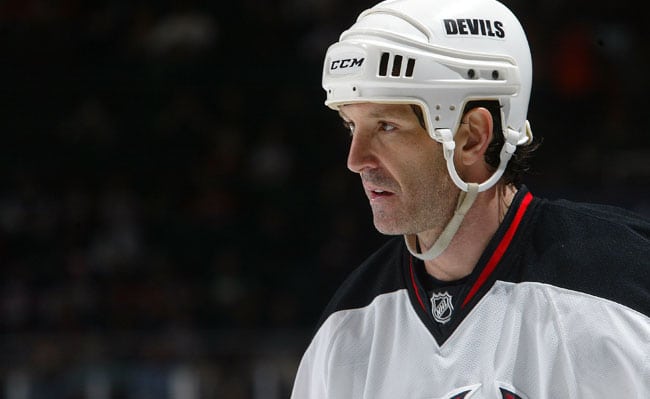
Screen Shots: A Thursday with Shanny
 Screen Shots: A Thursday with Shanny
Screen Shots: A Thursday with ShannyHere’s a tip for any and all fledgling hockey writers: anytime you get an opportunity to speak with Brendan Shanahan, do whatever you need to – throw other journalists a rapid-fire succession of Gordie Howe elbows; threaten to launch lawsuits; hold your editor hostage – to make it happen.
There are few players who are as accomplished and eloquent as the newly retired great who now toils as the NHL’s vice-president of hockey and business development. So when I spoke with Shanahan earlier this week for my column in THN’s upcoming People of Power & Influence issue, we talked about everything from his new job to the 2004-05 lockout season to the so-called Shanahan Summit (and subsequent obstruction crackdown) to George Clooney’s fantastic new movie Up In The Air.
We didn’t have room in the magazine to include all of Shanahan’s thoughts, but I didn’t want those pearls of wisdom to go unseen by the public at large. So here they are.
On the possibility of the league returning to their post-lockout approach of testing new ideas by experimenting with a group of undrafted junior players:
“I was there for one of those. My own opinion is that I don’t think that works. You can try a whole bunch of things, but you’ve almost got to re-create the skill of an NHL player, the size and strength of an NHL player, and the intensity and pressure of winning or losing, to truly get a barometer of what players will do.

“I know there are flight simulators that seem to be effective in training pilots, but I don’t know there’s an NHL simulator that would really work. Sometimes we try things in exhibition or the American League, or we watch other leagues, but until that puck drops with an NHL logo on it, you’re never sure how things will work.”
On any advice he might have for young NHLers in opening up to the media:
“I don’t know if any person can coax a player into giving more of themselves. Most players are sometimes uncomfortable being interviewed. You’d think a guy couldn’t possibly be that way because he goes out in front of 18,000 people every night, but a lot of guys are.
“Guys who are comfortable with it just need to be assured they won’t be made fun of, but the guys who don’t like to do it, you accept them for who they are. I’ve played with guys who clam up in a TV interview, but if you sat down with them for dinner, they’re great.”
On the heat he occasionally took for being one of the game’s most colorful interviews:
“Sometimes I felt it. Sometimes I’d be doing an interview and Scotty Bowman would walk around a corner and look at me like, ‘enough.’ Coaches will always do that. But owners and general managers are starting to realize that there are real opportunities to connect to the fans that we haven’t done yet.”
On the difference in the league’s marketing approaches between his first year in the NHL and the present day:
“It was a different time when I started. There was less of an emphasis on selling the game and marketing it to the fans. Now I think a lot of owners understand that fans want more. For a player to be on Twitter or Facebook, it’s great. People are starting to realize that fans don’t need more of your time – they just want to know how you’re feeling and what you’re thinking.
“I watched a Rangers game the other night and after they lost, Henrik Lundqvist was on his Twitter page, saying something as simple as he wanted to go home and bury his head and was totally disgusted with the loss. A fan sees that and sees he cares as much as he does. We need to show players why that helps the game.”
Adam Proteau, co-author of the book The Top 60 Since 1967, is writer and columnist for The Hockey News and a regular contributor to THN.com. His blog appears Mondays, his Ask Adam feature appears Fridays and his column, Screen Shots, appears Thursdays.
For more great profiles, news and views from the world of hockey, subscribe to The Hockey News magazine.